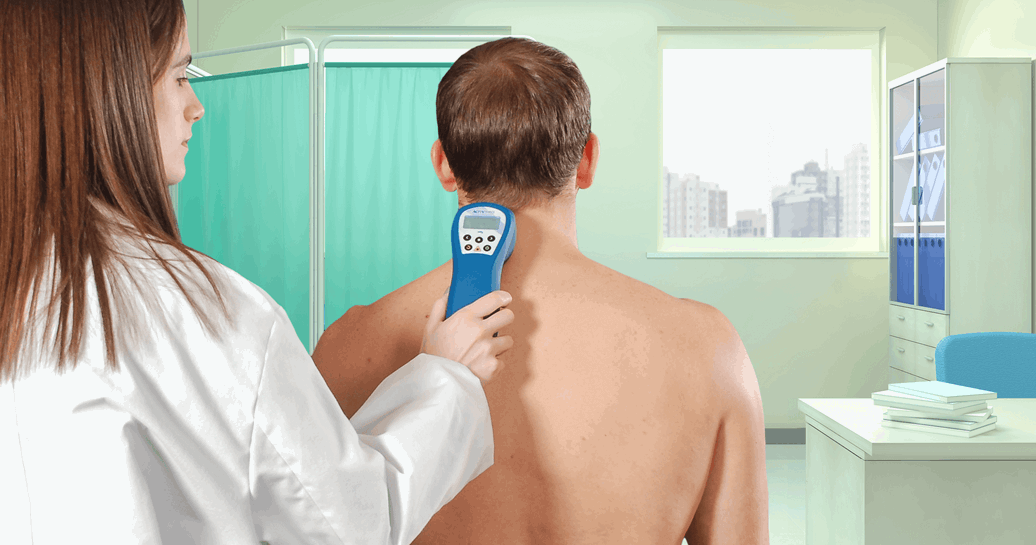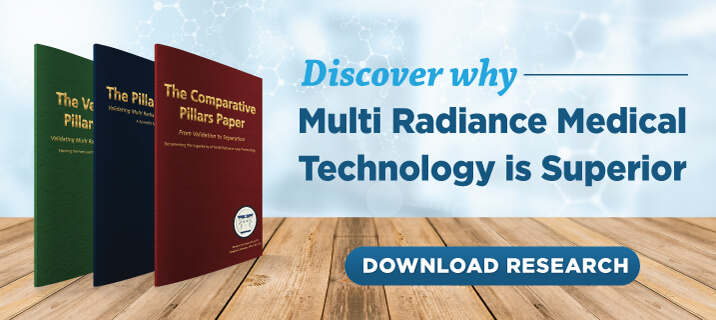How to Treat Neck Pain with Low-Level Laser Therapy
Thursday March 15, 2018

Today many patients are seeking relief from neck pain using low-level laser therapy (LLLT) or photobiomodulation (PBM) versus treating the symptoms with drugs and ignoring the underlying cause of chronic neck pain.
What is Neck Pain?
Neck pain is a common musculoskeletal condition that affects more than 30% of U.S. adults annually.1 The exact cause of the pain can be unclear because approximately 50% of the population2 is afflicted with degenerative joint disease, but neck pain may be associated with several factors, including:
- Injury or trauma, such as whiplash or repetitive occupational injuries
- Cervical nerve root involvement
- Poor posture
Common Conditions Associated with Neck Pain
- Degenerative disc disease
- Degenerative joint disease of the zygapophyseal joints
- Disc herniations
The Relationship Between Neck Pain and Facet Joints
A significant portion of pain associated with cervical sprains is likely to involve the facet joints, in addition to the intervertebral disc and upper cervical ligaments. There have been neuro-anatomic studies that revealed how the facet joint is innervated and contains free and encapsulated nerve endings.3 This may contribute to the pain many patients experience.
Pain Management with LLLT
LLLT has been shown to have a significant effect on pain reduction for patients suffering from neck pain.4 Photo acceptors within the body absorb the emitted light when applied in direct contact with the body. The absorbed light stimulates the production of intracellular energy via oxidative phosphorylation in the electron transport chain.
The application of light can be part of a larger treatment program. Optimal outcomes are primarily dependent on the dose of light that is administered to the target area. Treatment times for pain tend to be longer and provide higher doses. Also of note, the targets for the treatment of pain are different, in that the primary targets are nerves, nerve roots, trunks and branches. A treatment plan should be prepared to address factors such as tissue injury but the primary focus should be the reduction of pain.
Basic Treatment Techniques
1. Position patient in a comfortable position.
2. Directly target the site of pain with a higher dose of 3-4 minutes with 1000 Hz (approximately 30-50 joules), and targets should include nerve roots, branches and trunks. Select a minimum of 2 targets.
3. Do not move the emitter; hold it in one location (static) to keep the delivered dose constant.
4. Pain treatments of the cervical spine may benefit from doing treatment from the anterior to prevent scattering of the light by the articulating facets (AF). In the cervical vertebrae, AF face 45 degrees to the transverse plane and lie parallel to the frontal plane, with the superior articulating process facing posterior and up with the inferior articulating processes facing anterior and down.
PBM or LLLT, in conjunction with other therapies, offers a safe and effective alternative to drugs or surgery in treating neck pain.
Sources
- Practical Pain Management. About Back/Spine, Neck, and Shoulder Pain – The Statistics. 2019. Retrieved from https://www.practicalpainmanagement.com/patient/conditions/low-back-pain/about-back-spine-neck-shoulder-pain-statistics
- AAPM&R. Degenerative Joint Disease. Retrieved from https://www.aapmr.org/about-physiatry/conditions-treatments/pain-neuromuscular-medicine-rehabilitation/degenerative-joint-disease
- Manchikanti, L., Schultz, D. M., Falco, F. J., & Singh, V. (2018). Cervical facet joint interventions. In Essentials of Interventional Techniques in Managing Chronic Pain (pp. 387-412). Springer, Cham.
- Chow, R. T., Johnson, M. I., Lopes-Martins, R. A., & Bjordal, J. M. (2009). Efficacy of low-level laser therapy in the management of neck pain: a systematic review and meta-analysis of randomised placebo or active-treatment controlled trials. The Lancet, 374(9705), 1897-1908.


